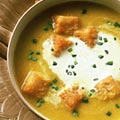|
Russian
Daily Meals
The
kitchen is the favorite or central spot of the home in many
cultures. Russiais not the exception, even more likely a demonstrative
example. Russian kitchen is the heart of Russian home which
smells and dainties create a special, stirring up the best
feelings, atmosphere. It is the place where families gather
for having meal, friends get together for chatting over a
cup of tea and the guests are welcomed to feel the warmth
of the national hospitality. Usually, there are three meals
of the day. But, depending on the place of living, they are
organized and offered in different ways. To most Europeans
and Americans, the principal meals are breakfast, lunch and
dinner (supper). Russians, such as every nationality, start
the day with breakfast - zavtrak . It is a very hearty
meal, though. A breakfast in Russian way includes eggs, sausages,
cold cuts and cheese that are accompanied by bread slices
with butter. Tea or coffee is a must on the morning table.
Various hot cereals are popular as well, particularly with
mothers and kids. Russian children are supposed to get their
first shot of energy from a hot bowl of oatmeal. Perhaps they
do, but they resist to this healthy energy with all their
childish rigidity. Lunch is nonexistent in Russia. In fact,
this term was generally not understood until the early 1990's.
The second meal of the day is taken about around 2 o'clock
p.m. and called obed (dinner). Russian obed is the
main meal of the day. Zakuski (appetizers) highlight the meal.
Such delights as caviar, pickles, smoked fish, and various
vegetable salads can easily serve a rich meal. However, everyday
zakuski are composed of light salads and pickles. Then goes
soup (pervoe � first course). Soup, mouth watering, with meat
pieces in delectable transparent broth, is the first step
of the long satiation process. The main course - vtoroye is
usually of meat or fish. The main dish is usually accompanied
by a garnish: potatoes, rice, noodles and vegetables. Finally,
comes the dessert! Tretye might be a piece of cake, fruits
or chocolates. After that, if people don�t work, they and
kids enjoy a mid-afternoon nap followed by a snack. Like English
5 o�clock tea, Russian poldnik makes the day brighter
� a cup of tea, milk for kids, with biscuits or patties. Everyone,
young and old, enjoys a nice cup of tea. Tea is offered after
every meal. The evening meal is served around 7 o�clock p.m.
or later. It is called uzhin in Russian. Russian uzhin
is similar to dinner but without soup and dessert � just some
appetizers and main course from meat or fish with garnish.
|
|
The
Russian name is "Selyodka pod Shouboy",
that means "Herring under fur coat". It is a traditional
national dish for any events. You can call it, for example,
Dressed Herring. Dressed Herring is loved and considered
one of the most delicious salads by Russians everywhere.
Try and enjoy! |
 |
Schi took
a special place among national soups. Historians suppose
that this dish was known long time ago before Adoption
of Christianity in the Rus. Once all soups were called
Schi. Now Schi are cabbage soups. There are a lot of
Russian proverbs about schi: "Good wife is not the one
who speaks well, but who cooks schi well". Schi are
cooked on meat, fish or mushroom broths. Schi with meat
are served with a meat piece in the plate. Pies and
Koulebyaki are very good with Schi.
|
|
|
Pelmeni, a sort of little boiled pasties,
is favorite Russian food. It's a kind of snack (you can
buy them in the shops, but it's nothing comparing to home-made
version). As Pelmeni are kept frozen very well longtime
and you can cook them quickly. |
|
|
Bliny is a Russian traditional dish.
They are baked in a great quantity at Shrove (carnival)
- last week before Lent. Bliny making was a real sacred
mystery. People told fortunes on the dough, kept their
recipes of Bliny in secret. The first Bliny were put on
the window-sills for poor people and pilgrims. The foreigners
were very surprised at how many Bliny Russians could eat.
At Shrove mother-in-law must bake a lot Bliny for her
son-in-law. The most popular Bliny were made from buckwheat
flour. Good Bliny must be very very thin. The thinner
Bliny are the perfect your skill is. |
|
Pryaniki
are ones of the most interesting makes
of Russian cuisine. The name of Pryaniki comes from the
spicy taste and smell which are achieved by special various
additions. They could have different sizes, sometimes
they made to order Pryanik up to several poods ( pood
is old Russian measure, 16,38 kg (36 lb) and decorations.There
were two kinds of Pryaniki - painted and printed. Painted
Pryaniki are decorated with nuts, berries and candied
peel. Real
dynasties were involved in making forms for Pryaniki.
Sometimes Pryaniki were made from two layers with fruit
jelly
or jam between. Expensive Pryaniki were always covered
with icing. Pryaniki are one of the favourite food. They
were always offered to guests, relatives. But there were
"leavingaway" Pryaniki that were given to late guests
and, having received such Pryanik, they had to leave the
house immediately. They baked Pryaniki to any occasion
and the quality and the decoration were perfect. |
|
|






